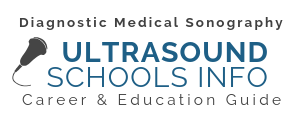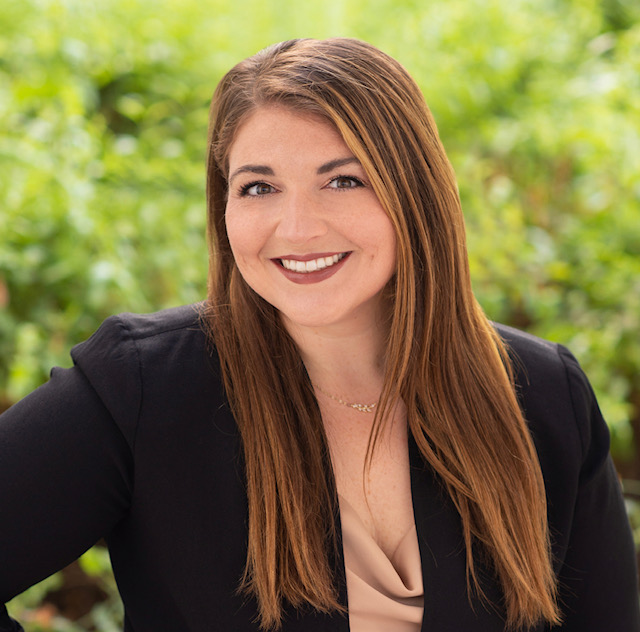Sam Callis, contributor at USI, is an author and sonographer with experience in multi-specialty clinical practice, higher education, and the medical device industry. She is the author of Diagnostic Medical Sonography – The Definitive Guide to Planning Your Career.
We were first introduced to Samantha back in 2019 with this terrific interview in which she shares her passion for the industry.
There are those that are content with their position as a sonographer…and then there are individuals who emanate wholehearted enthusiasm for their ultrasound profession. Such is the case with Samantha Callis, MHA, ACS, RDMS, RDCS, RVT with the University of Southern Indiana.
In our interview from 2019, Samantha describes how she began her sonography career, the work that went into training and certification, her zeal for her profession as well as her vision of improving healthcare for the benefit of patients. Throughout the whole piece, Callis offers valuable advice to aspiring sonographers and also those wishing to advance their sonography careers.
I found sonography through my cousin, Angie (who is more like a sister!) who happens to be an awesome vascular sonographer. Her supervisor, Kelly, gave me permission to observe in their department. The first patient I observed had toe amputations so that definitely caught my attention. I distinctly remember those first few days of observation. It is hard to describe, but I immediately felt very comfortable and “at-home” in the hospital.
To this day, I still feel that way. I joke that I’m going to be a hospital rat forever… it’s a lifestyle, you know?! I have this great tumbler that says “Messy Hair, Scrubs, Coffee, Bring It On”. If you ask anyone in my sono family, they’d say that is definitely me in a nutshell. I guess the joke is on me because as an instructor and clinical coordinator, I do the business casual thing most days, but you better believe I appreciate those scrub days when I get them!
Pursuing Early Interests
Being from a small town just a bridge away from Louisville, KY, it was the little things in those early days of career exploration that made such a large impression on me. Catching the sunrise driving across the bridge over the Ohio and around hospital curve dreaming of where I might work and what I might do with my career and life gave me an indescribable amount of motivation to pursue sonography.
I applied for and received a scholarship from Norton Healthcare as a senior in high school, and it was really special when I eventually became employed with Norton Children’s (previously Kosair) Maternal Fetal Medicine. I got to make those same early morning drives, catch the sun coming up, and get paid to do something I love to do. (Just don’t remind me about call, night shift, holidays, and weekends that is inherent in our profession—it has a way of spoiling the nostalgia!)
Samantha’s Advice to DMS Students
Finding mentorship is crucial. Learning to be a sonographer is not easy. It takes a commitment to continual education and practice. The onus is on the sonographer (student, technologist, physician, physical therapist, professional doing any kind of diagnostic imaging, etc.) to thoroughly understand fundamentals of sectional anatomy, pathophysiology, and sonographic physics and instrumentation in their areas of practice.
Drawing Inspiration From the Arts
I really wanted to study the arts. I absolutely love music. I love to sing, play the piano, paint, and write. I’ve always had trouble verbally communicating how I feel, and there is nothing better than art to “spit it out” for you.
When I am scanning, a lot of times I feel like I’m in that same flow state like when I would play the piano or painting. The one-pointed focus of the mind when your eyes, hands, and brain work together to make those textbook incredible images is just as therapeutic to me as any of the art forms that I enjoy.
Fun fact— the last major I was considering prior to attending the University of Southern Indiana was Theater at the University of Evansville… Could have been Rami Malek and had (a really delicious) latte named after me, but I was also a science nerd with a weak spot for anatomy and physiology and the rest is hx ← charting pun intended. Shout out to the exceptional local coffee scene in Evansville— thank you all for keeping me at my overly caffeinated baseline.
Sonography is truly the best of both worlds, art and science. We are not robots, but craftsmen with the best kept secret— artisanal flair in healthcare! That definitely doesn’t happen often. If you hear us (sonographers) getting all up in arms about artificial intelligence, point-of-care-ultrasound, automated learning, etc. it comes from a place of fear because most people love doing this profession and don’t want anything to take that from them… we also enjoy getting a paycheck – ha!
Even with the advent of booming point-of-care-ultrasound applications (for the record— I’m POCUS friendly and support any evidence-based practice that positively impacts patients and system efficiency.) I am confident there will always be sufficient demand for highly skilled sonographers. Disseminating the theory and practice of sonography to non-traditional sonographers utilizing diagnostic ultrasound is where we should be going.
My most immediate mentors in this career were/are the DMS program faculty at USI and the clinical affiliates who steadfastly offered their time, expertise, patience, encouragement, and critique. I distinctly remember an instructor coming in during open lab time to say hello and parted by saying “perfect your craft”. She didn’t share the secret that this cannot be perfected because it is a practice and there is always something to learn, improve, and innovate. That is what I love most about this career.
I’m keeping this one brief because I consider most people I have worked with a mentor in some capacity because you are either learning what to do or what not to do. (Yay for those weird days where you feel like you’ve never scanned a patient in your life.)
Finding mentorship is crucial. Learning to be a sonographer is not easy. It’s our job to make it look easy, but it takes a commitment to continual education and practice. The onus is on the sonographer (student, technologist, physician, physical therapist, professional doing any kind of diagnostic imaging, etc.) to thoroughly understand fundamentals of sectional anatomy, pathophysiology, and sonographic physics and instrumentation in their areas of practice. We can either be annoyed or scared about what we do not know/understand, or we can be excited. I choose the latter. Never a dull day!
Growing a Career
When applying to the sonography program at USI, students write a narrative statement of what they want to do in their career. In mine, I wrote that I wanted to become a sonographer and eventually do my masters and doctoral degree and teach. It’s kind of funny because you get a couple semesters into the program and you’re really just excited to get a B on a test or something like that. Learning to scan was very difficult for me in the beginning.
My brain understood sonographic images way before my body knew how to produce them. The kinesthetic learning gap was huge for me. It was frustrating and scary, to say the least. I really didn’t know if I was cut out for this profession. Time, patience, practice, and grit finally got my didactic knowledge and clinical skill to a middle ground to become a competent practitioner. All that work to be competent and proficient. (When do I get to be a superhero at this?)
I knew I wanted to teach because I understand how difficult this is to learn. I don’t consider myself a patient person but scanning and teaching sonography encourages (read—forces) me to try. I don’t want potential to slip through the cracks because this is hard to learn.
We need excellent diagnostic imaging professionals! We are a very important cog in healthcare. We have the potential to transform how conditions are diagnosed and treated. My rose-colored glasses want to live in a country where healthcare is more efficient and accessible to our communities. #UltrasoundFirst
Fostering Success in Education
The diagnostic medical sonography program at the University of Southern Indiana grants a Bachelor of Science in Radiologic and Imaging Sciences. This undergraduate program is traditionally completed in four years—1.5 years of prerequisite coursework like anatomy, physics, math, psych, med term, etc. followed by 2.5 years of sonography coursework. Students learn general ultrasound including abdominal, obstetrics, and small parts sonography their first year and then specialize into either cardiac or vascular ultrasound their senior year.
Our program runs continuously through fall, spring, and summer. Students complete just shy of 2,000 clinical hours with various clinical affiliates locally in Evansville as well as a few wonderful distance sites ~1 hour from Evansville.
We are a CAAHEP-accredited program with accreditation in all three specialty tracks—general, cardiac, and vascular.
Another exciting opportunity we offer is a 3-year accelerated degree program for incoming USI freshmen that have completed enough prerequisite college credit eligible courses (like AP courses) to apply to our program the fall after they graduate high school instead of the traditional sophomore year.
Our students come from all walks of life and experiences. Many are traditional college students, but we also have students that have completed other degrees or have very valuable work experience outside of healthcare.
Students are NOT required to have any form of healthcare experience or medical education when applying to our program. Because we offer so much clinical experience hours, laboratory hours, and patient care skills and education, having that prior experience is certainly not necessary. It may be helpful and bring an added dimension to the cohort, but that goes for anyone—the person that graduated high school a few months prior or someone who was a social worker in a previous career, for example.
I’m going to list this because it’s important and I know students pay more attention to my emails with bolded bullet points haha:
- GRIT-MUST be able to dig heels in during the program, every day!
- COMMUNICATION-Must be able to communicate needs… can’t teach or fix something I don’t know about.
- CONFIDENCE-This is the hardest for most… students do not start with much confidence because they’ve never done this before. They start scanning and begin to shrink in the face of constant critique and constructive criticism. I always tell the students to “be confident, even if it’s confidently wrong”. Student walks in work room after a crappy job and they know it…“Hey, Clinical Instructor, I have NO idea what this thing is. It’s hyperechoic, large, and vascular. I need help. Will you guide me in completing the images and measurements so I can finish the exam?” At that point, it didn’t matter that they couldn’t name the pathology… they confidently communicated their needs and gained the additional experience of finishing a pathology evaluation under direct supervision. #SonoWin
- POSITIVITY-I’m not saying be peppy to the point of being ungenuine, but be positive because some days good morale is the ONLY thing a department has going for it and that is true during clinical, classes, and in the professional world no matter where they work or what they do.
- STAY IN YOUR LANE-There are many power dynamics and politics at play in the professional world. There is a right time to be serious, funny, sassy, quiet, loud, a leader, and a follower. Sometimes it is hard to know when it’s okay to do what, especially for women in a culture that has very overt gender norms and expectations for workplace behavior. The most recent SDMS salary and benefit report shows 88% of our profession is female. This means as a program administrator and instructor in a liberal arts institution of higher education, I have a responsibility to my students to make them aware and understanding of cultural nuances that most certainly will affect their education and their work experiences. I don’t like that this is part of my role, but it’s true. Instead of forcing students to figure things like this out by themselves, I have the opportunity to teach them to navigate it gracefully and encourage them to support change so that future generations don’t have!
Ask. For. Help.
Even if you’re not sure what you need to be helped, make it loud and clear that something is preventing you from being able to succeed as a student. This goes for class, clinical, and life outside of this huge academic commitment.
Universities in particular are well suited with appropriate personnel and resources to address issues that affect at student’s ability to perform well academically.
Please see above. I figured this out, but much later than I should have. All is well that ends well, but I sure could have saved myself an abundance of stress and time!
Buckle up. Most clinical academic programs are rigorous. It is not going to be easy, quick, or handed to you—but it’s worth it.
In an age where the value of a college education (especially four-year, liberal arts) is often negatively discussed due to the financial and time investment, completing a college education offers a freedom that is difficult to explain. Maybe that freedom is financial because you get a great job that affords you the life of your dreams. Maybe that freedom is less tangible because it’s a more personal and spiritual. The four years you spend “wasting your time and money” at college may be the very reason you live your most authentic and happy life. I’m not an economist, philosopher, or betting woman, but I certainly believe that every bit of time and money I have invested in myself and my education has been worth it.



